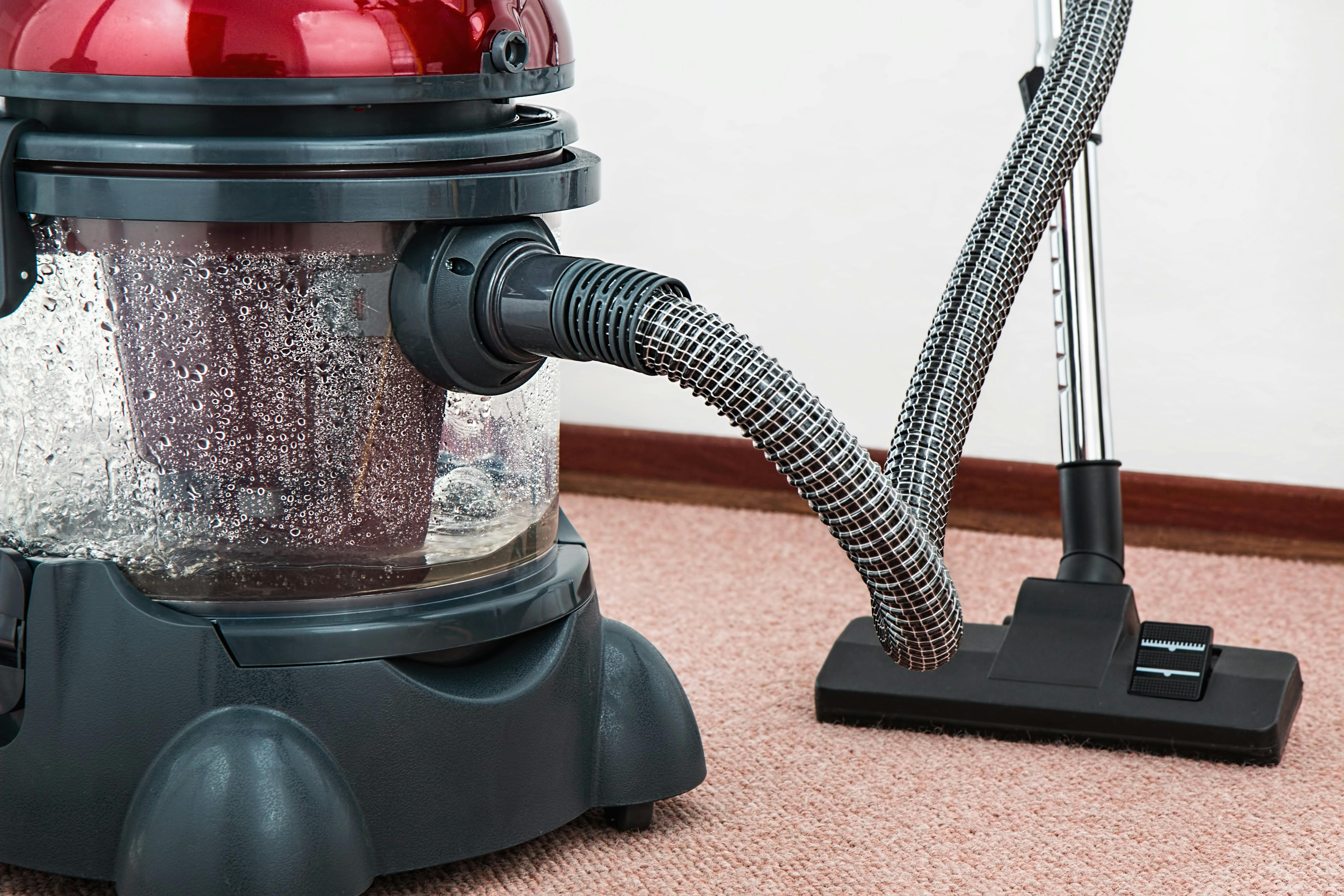Accidents happen. Whether it’s a cut while doing DIY or a pet mishap, finding blood on your carpet causes an urgent predicament. Learning how to get blood out of carpet well matters—not just to rescue your décor, but to avoid damage, lingering odour or fibre discolouration.
In this article, we’ll walk through step-by-step techniques (fresh and dried), discuss the science behind blood stains, and explore how innovations—like context-aware AI in cleaning devices—are changing the game. Along the way, we’ll flag privacy and safety concerns too, so you can act confidently. Let’s dive in.
Why Blood Stains Are Especially Tricky
Before jumping into methods, it helps to understand what makes blood stains stubborn.
The chemistry of blood
Blood is a protein-rich fluid, chiefly made of haemoglobin and other proteins that coagulate upon exposure to air. Once those proteins bind, they adhere to fibres. This means a blood stain isn’t just pigment; it’s physical binding. Professional guides emphasise that enzyme cleaners (which break down proteins) tend to be most effective for biological stains like blood.
Moreover, blood can wick into the core of a carpet pile or underlying padding, making full removal harder.
What forensic science is teaching us
Recent forensic research (2025) shows how blood spreads on cotton — when a droplet lands, it wicks across fibres and penetrates deeper layers, complicating clean-up and even affecting how investigators interpret the scene.
Another relevant study examined how blood stains degrade when buried in soil across diverse fabrics (cotton, polyester, wool) over nine weeks. It found that traces can persist under certain conditions.
While forensic insights aren’t directly about cleaning, they do reinforce the idea: time, material, and depth of penetration all matter when you’re trying to remove a stain.
What to Do Immediately (Fresh Stains)
The earlier you act, the better your chances of success.
- Blot — don’t rub.
Use a clean, white cloth or paper towel. Gently blot the area, absorbing as much blood as possible. Rubbing spreads the stain deeper. - Use cold water.
Never use hot or warm water on blood. Hot water can “cook” proteins and make the stain permanent. Most UK cleaning guides and the NCCA (National Carpet Cleaners Association) recommend cold water. - Apply mild detergent or enzyme cleaner.
Mix a teaspoon of mild liquid detergent in two cups of cold water (or use a carpet-safe enzyme cleaner). Blot from the edges inward. Let the solution sit briefly, then dab away residual moisture. - Rinse & blot again.
Use a cloth dampened with cold water to rinse, then blot dry. You want no soapy residue left behind, as that can attract dirt.
If the stain is particularly stubborn, don’t panic — there are further steps below.
Dealing With Dried or Stubborn Blood Stains
For older stains, more aggressive—but cautious—methods may be needed.
Scrape & vacuum first
Gently loosen dried, crusted residue using a dull knife or the back of a spoon (being careful of carpet fibres). Then vacuum the residue so that when you dampen the area, it won’t expand and worsen.
Try a salt, baking soda or cornstarch paste
These powders absorb moisture and lift stains. Mix with cold water to form a paste, apply over the stain, let it sit (20–30 minutes or more), then blot clean and vacuum.
Use hydrogen peroxide (3 %) carefully
Hydrogen peroxide can help break down blood, but test it first in an inconspicuous area to guard against bleaching, especially on coloured carpets. Let it bubble for a few minutes, then blot, rinse, and dry.
Vinegar + baking soda combo
Mix one part white vinegar with two parts cold water; apply to the stain, let sit briefly, then sprinkle baking soda. When foaming stops, blot and vacuum. This method is commonly recommended by cleaning guides.
Ammonia (synthetic fibres only)
A mild ammonia solution (a tablespoon per half cup of cold water) may help on synthetic carpets. Use only in a well-ventilated area and never mix with bleach.
Enzyme or biological stain removers
These are especially useful for older stains. The enzymes digest protein residues. Check that the product is labelled safe for carpet and follow instructions precisely.
If, after several attempts, you still see residual stain or discolouration, it may be time to call professionals.
Professional Cleaning & When to Call Experts
When might you need help?
- The stain covers a large area
- It has soaked through into the underlay or padding
- You have a delicate or expensive carpet (e.g. wool, oriental)
- DIY methods risk damaging the dye or fibres
UK “extreme cleaners” handle biohazard tasks like blood spills. One British expert, Ben Giles of Ultima, advises that if a blood stain is deeply pooled and extensive, cutting out and replacing the carpet section may be safer than repeated scrubbing.
Professionals may use steam cleaning, ozone treatments, or chemical systems inaccessible to homeowners. They also ensure proper disposal and sanitisation, reducing any lingering health risk.
Transition to Smart Tech: AI, Sensors & Future Carpet Cleaning
As we step into mid-2025, cleaning technology is evolving. Let’s consider how natural language processing (NLP) and context-aware AI are making their way into the domain of stain and carpet care.
“Smart vacuum” that recognises stains
Imagine a future (already emerging) robot vacuum or carpet cleaner that uses cameras and AI vision to detect and categorise stains (blood, wine, coffee) in real time. Context-aware models trained on datasets may classify a stain as “biological”, prompt an enzyme-based spray, adjust suction power, and schedule follow-up passes.
Some cutting-edge research into stain removal in document scanning (e.g. stain removal via memory-augmented Transformers) suggests similar architectures could adapt to spatial stains on surfaces.
Voice + smart home integration
You might say, “Hey, cleaner, treat that blood spot,” and the device’s onboard NLP will interpret severity, move to the location, deploy a cleaning cycle, and report status. This ties into Koray Tuğberk Gübür’s semantic SEO idea of context-aware systems: the AI knows not just “clean” but what kind of stain.
Privacy and safety implications
Devices with cameras or sensors in your home must handle privacy responsibly. That means local processing (rather than streaming video to the cloud), encryption, clear opt-in, and the option to disable imaging. Users need control over data.
Furthermore, when handling biological stains, devices must avoid cross-contamination — a “blood mode” that uses dedicated filters or UV sterilisation could be a future standard.
While fully autonomous blood-cleaning robots remain futuristic, the trend toward smart, context-aware devices is real. In five to ten years, they may become common in high-end homes and commercial spaces.
Tips, Precautions & Best Practices
- Always test any solution in a hidden or low-visibility area first
- Use cold water; avoid hot or warm liquids
- Work from the edges of the stain inward
- Avoid over-saturating—the carpet backing can soak up
- Fully dry the area; use fans or air circulation
- For coloured carpets, avoid peroxide or ammonia unless tested
- Wear gloves & ventilate if using chemicals
- Document the stain’s appearance before and after for insurance, if relevant
Conclusion
Knowing how to get blood out of carpet is part science, part timing, and part technique. Fresh stains are your best opportunity: blot quickly, apply cold water and mild detergent, and rinse. Older stains may require enzyme cleaners, hydrogen peroxide (carefully tested), or even expert intervention.
The underlying chemistry—protein bonding—and forensic research remind us that time and depth matter. Meanwhile, the next generation of cleaning gear, powered by NLP and context-aware AI, promises an era where a vacuum might detect and treat a blood stain automatically. But with that comes responsibility: privacy, sanitisation, and safety must remain front of mind.
For now, keep enzyme cleaners handy, act fast, and don’t hesitate to consult professionals if it’s beyond your reach.
FAQs
- Will hot water help remove blood?
No — hot or warm water can “cook” proteins in blood, making the stain set permanently. Always use cold water. - Can hydrogen peroxide damage carpet colour?
Yes — especially on darker or dyed carpets. Always test on an inconspicuous spot first before treating the visible area. - How long do I need to let an enzyme cleaner sit?
Follow manufacturer instructions, typically 5–15 minutes. For very old stains, you might repeat or leave a bit longer, but don’t exceed what’s recommended. - When should I call a professional?
If the stain is large, has soaked through to the underlay, or DIY methods risk damaging the carpet, it’s wise to get expert help.





